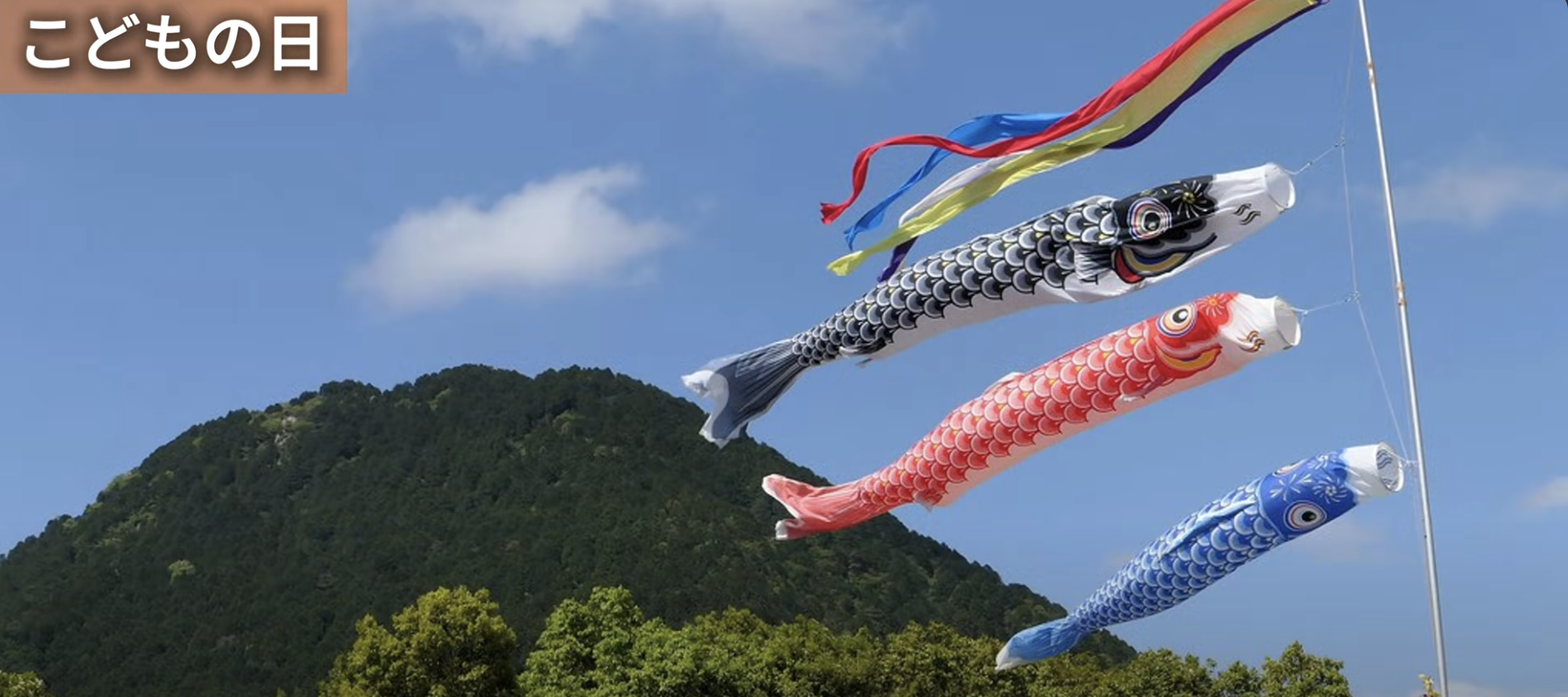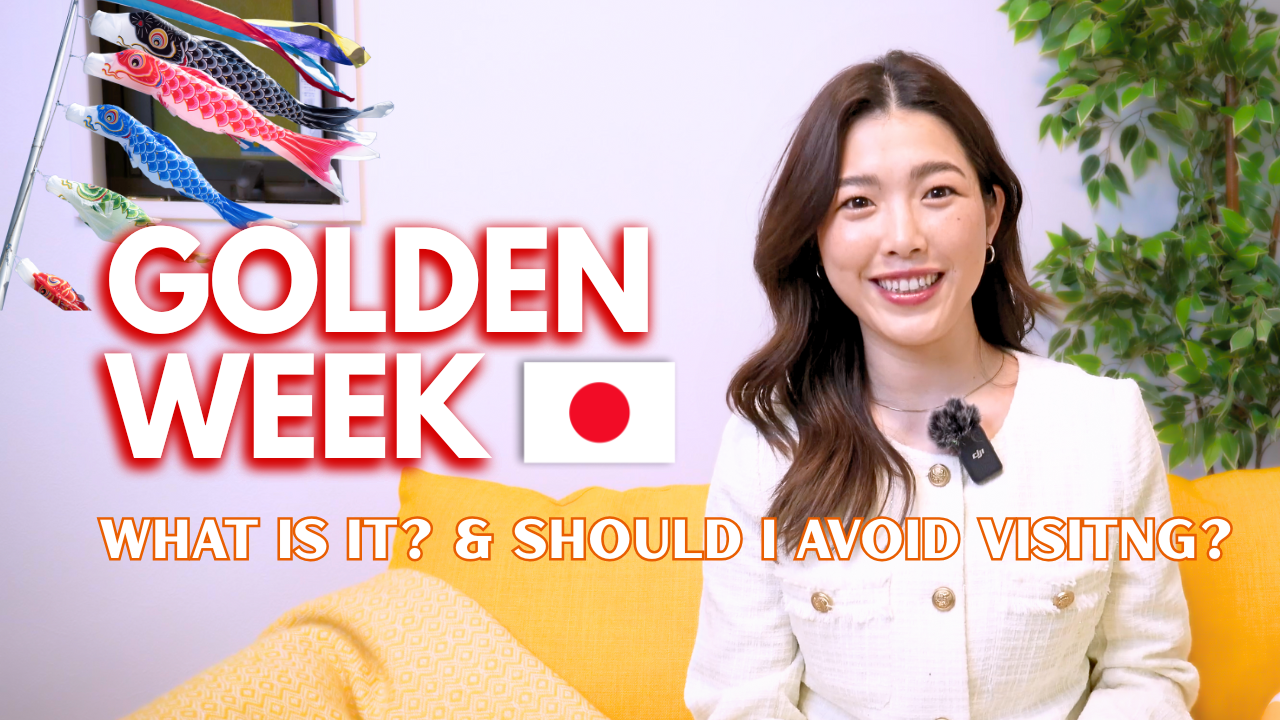
Should I Avoid Golden Week Holiday in Japan?
Imagine being in Japan during springtime—parks blooming with fresh greenery, colorful carp streamers fluttering in the breeze, and bustling tourist destinations. That’s Golden Week, one of the most anticipated holiday seasons in Japan.
The Japan Golden Week holiday is a collection of four national holidays that happen within one week from late April to early May. For many Japanese people, it’s one of the rare times they can take a longer break from work or school. For travelers, it can be tricky to navigate and often seen as best avoided.
However, whether you’re planning your next trip to Japan or already decided on coming in early May, understanding Golden Week will help you understand and navigate this unique time of year like a pro. In this post, we’ll explore what each holiday means, what to expect if you’re traveling, and even test your knowledge with a fun quiz at the end!
Table of Contents:
Want to learn about Japan’s Golden Week and their holidays from Sayaka sensei in fully Japanese? Watch this listening practice video aimed for JLPT N5 learners. There are also English subtitles.
#1 – What are the Four Holidays of Japanese Golden Week?
Golden Week in Japan is composed of four different holidays, and the surrounding weekend days, creating a multi-day holiday of often between 5 days to even 11 days (if you take additional days off work, for 2025). Let’s break down the holidays that make up Golden Week. Each one has its own meaning and traditions, and learning about them gives you a deeper insight into Japanese culture and history.
Why is it called Golden Week?
If you watch the video, Sayaka talks about the etymology of the term Golden Week. When people have time off from work and school, people go out for shopping, social occasions, and even travelーa lot of money gets spent during this time. It is a great time for businesses. Since it is a golden time for businesses, the Japanese started calling this series of holidays “Golden Week”.
昭和の日 (Shōwa no hi) April 29
4月29日 (read: shigatsu nijyū-kunichi)
This day usually falls on a three-day weekend, for a typical Japanese calendar, which marks the beginning of Golden Week. Shōwa Day honors the birthday of Emperor Shōwa (Hirohito), who reigned from 1926 to 1989. This day, while Emperor Shōwa reigned, was called the Emperor’s Birthday. After his passing, the name changed to みどりの日, to remind citizens of the richness of the land that Japan stood on as a foundation, but this name was given in 2007 to the new May 3rd holiday. The April 29 holiday then changed to its current name for citizens to reflect on the significant era of Shōwa as Japan moves forward toward the future.
In 2025, this holiday falls on a Tuesday.
Key Vocabulary:
– 昭和時代 (Shōwa jidai) – The Shōwa Era (1926 – 1989) is one of the most significant times of great change in Japan, traversing through the post-war rebuilding era, the rapid economic growth, a time of global recognition, then the bubble economy burst.
– 高度経済成長期 (Kōdo keizai seichōki) – This is the name given to the rapid economic development era in Japan that led to the economic bubble of the 80s.
– 天皇陛下 (tennō heika) – The Emperor, is the head of state of Japan, and appears to public in ceremonial events as well as some foreign visits. While Japan has a monarchy, the Emperor does not represent or hold power in the nation politically. The head of government is the prime minister.
憲法記念日 (kenpō kinenbi) – May 3
5月3日 (read: gogatsu mikka)
This holiday marks the anniversary of Japan’s post-war constitution, which came into effect on May 3, 1947. The day not only commemorates the establishment of it, but also wished for the growth and prosperity of the nation according to the law passing this holiday.
In 2025, since May 3 lies on a Saturday, no extra day off occurs for those already off work on Saturdays.
Key Vocabulary:
憲法 (kenpō) – Constitution. Note that the kanji 法 (hō) carries the meaning, “rule” or “the law”.
記念日 (kinenbi) – Day of Memorial. This vocabulary can be used in combination with other non-holiday milestones and notable dates such as 結婚記念日 (kekkon kinenbi) = wedding anniversary, 終戦記念日 (shūsen kinenbi) = Day of End of War (August 15).
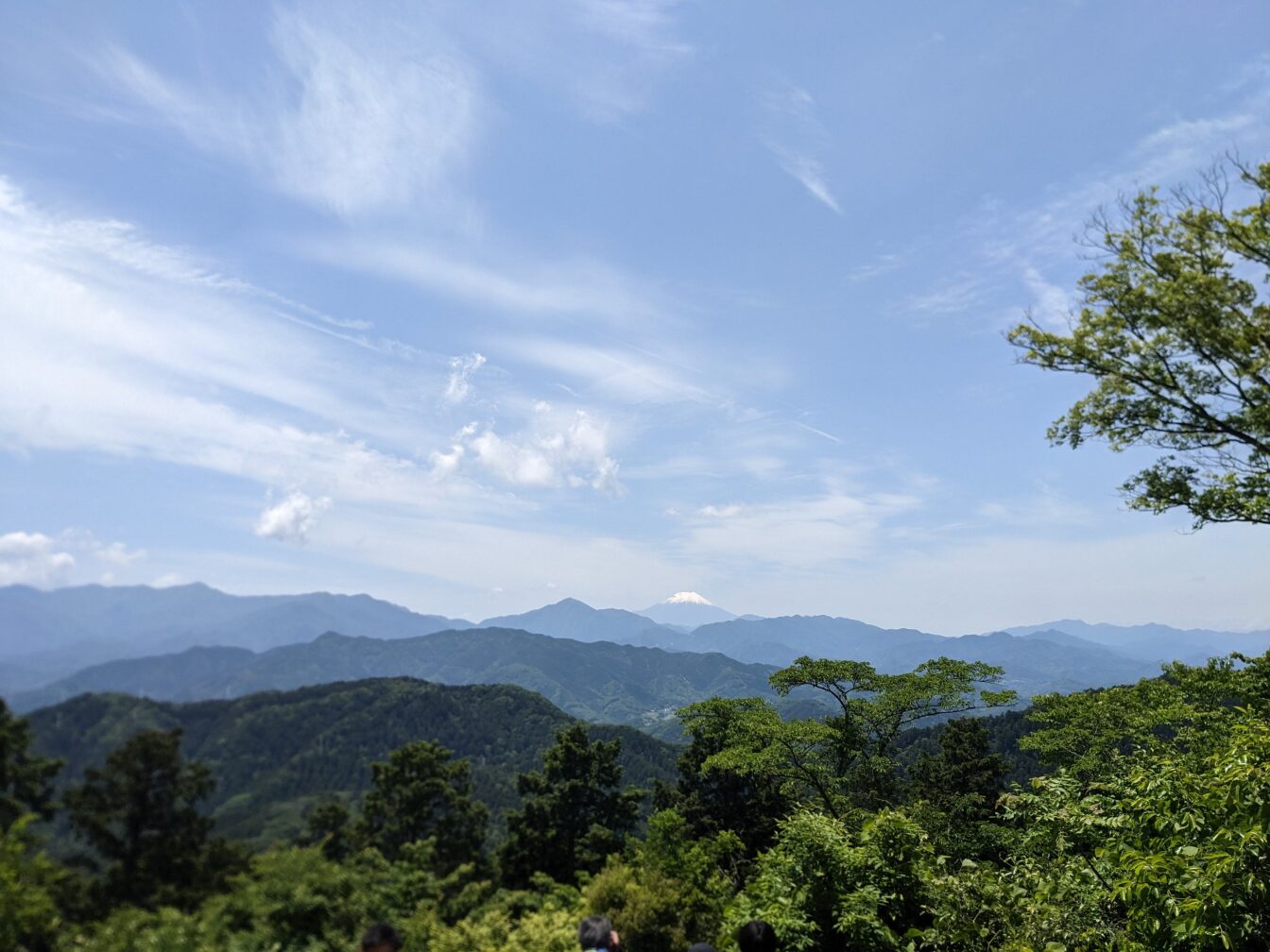
みどりの日 (midori no hi) – May 4
5月4日 (read: gogatsu yokka)
Originally celebrated as part of Shōwa Day, Greenery Day became its own holiday to promote the importance of nature. The name of the date also reflects Emperor Shōwa’s love for plants and nature. In 2025, May 4 falls on a Sunday, meaning that one extra vacation day by law called 振替休日 (furikae kyujitsu) is observed on the next weekday, on May 6, after Children’s Day (next section).
Key Vocabulary:
– 緑 or みどり (midori) – the word for the color green, or nature and plants.
– 振替休日 (furikae kyujitsu) – 休日 (kyujitsu) has the literal meaning, break day and is the term used to refer to holidays on informational devices such as train timetables. Adding 振替 makes the word 振替休日 which means make-up or substitute holiday. This often occurs when a holiday falls on a Sunday.
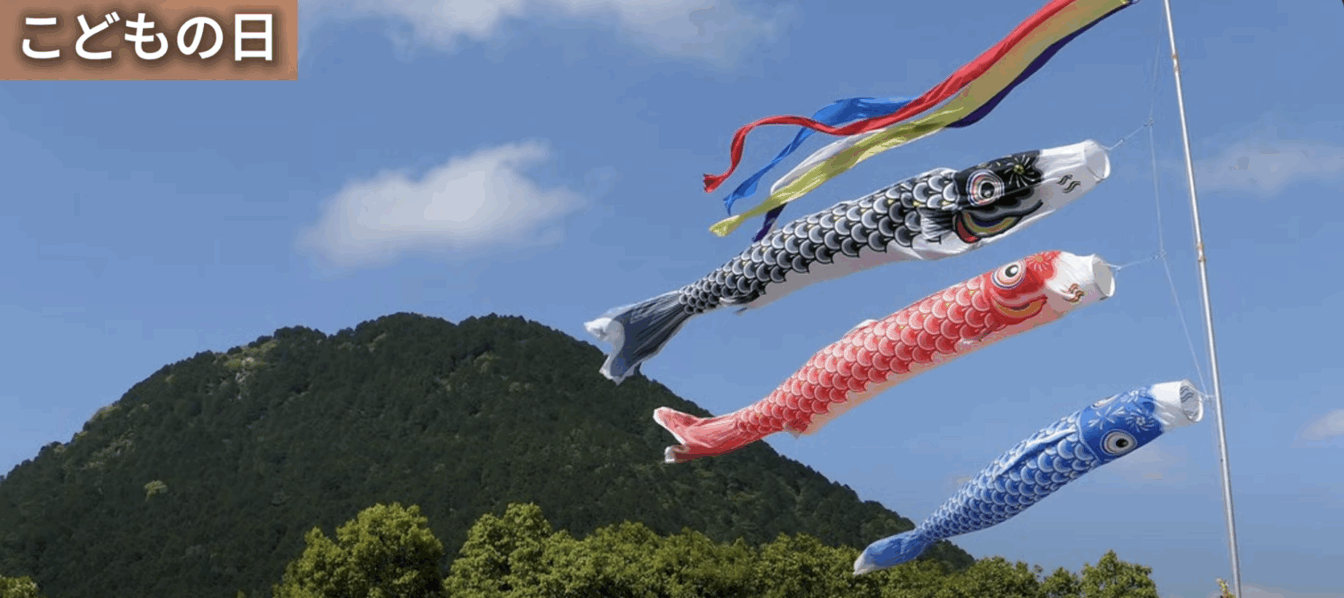
こどもの日 (Kodomo no hi) – May 5
5月5日 (read: gogatsu itsuka)
While many countries celebrate Children’s Day, Japan also has this holiday as part of the Golden Week. Originally known as 端午の節句 (Tango no Sekku) or Boys’ Day, it’s now a celebration of all children, wishing them good health and happiness. Often, there are promotions aimed at kids during Children’s Day such as discounted or free entrance to attractions, or special events targeting kids.
Families decorate their homes with koinobori (carp streamers), display samurai helmets or warrior dolls, and enjoy kashiwa mochi (sweet rice cakes wrapped in oak leaves).
Although nowadays the May 5th holiday is for both boys and girls, girls have their own traditional non-holiday celebration on March 3rd (3月3日) called ひな祭り (hinamatsuri).
Key Vocabulary:
– こども/子ども/子供 (Kodomo) – Children or kids. This is a good Japanese word to know for buying transit tickets or paying entrance fees to different attractions.
– 男の子 (otokonoko) – boys
– 女の子 (onnanoko) – girls
Fun Fact:
Koinobori, the Symbol of Children’s Day
鯉のぼり
You can’t miss them—koinobori, or carp streamers, are everywhere during Golden Week. These colorful windsocks represent strength and perseverance, inspired by the carp that swim upstream (the Nobori part of the name also coincides with the verb, 登る noboru = “to climb” upstream against the current of the river).
Each koinobori set has meaning:
– A black carp (magoi) for the father
– A red or pink carp (higoi) for the mother
– Smaller, brightly colored carps for the children
At the top there is a spinning wheel composed of arrow-shaped metal pieces called 矢車 (yaguruma). The clicking sound made by the wheel is said to drive away evil spirits and call for the good spirits.
Also at the end, above all the carp, is a series of fabric called 吹き流し (fukinagashi). The five colors are based on the ancient Chinese philosophy of the five elements. The five elements: fire, earth, gold, water, wood, form a cycle of nature, which is said to be the foundation of good spirits.
Even in cities, you’ll see them hanging from balconies or displayed in public parks and riversides.
#2 – Travel in Japan during Golden Week: What to Expect
Late April and May is seen as a shoulder season for travelers from abroad. The crowds for seeing cherry blossoms are gone, and it is seldom a school break for many parts of the world. However, traveling in Japan in late April or May means running into Golden Week – often called a time to avoid traveling in Japan.
So should Golden Week really be avoided? Here are my views about the question.
Will Golden Week affect my Travel Plans in Japan?
Yes, let’s start with some cons of traveling in Japan during Golden Week.
Cons
| Domestic Tourist Crowds – expect popular destinations to be packed such as the notable shrines and temples of Kyoto, onsen areas like Hakone or Kawaguchiko, and other attractions like Tokyo Disney Resorts or Universal Studios Japan during Golden Week. Driving on highways can turn out to be slow too as a result. In fact, according to travel agency JTB, over 23 million people traveled overnight during Japanese Golden Week, with over 90% of travelers staying domestic in 2024. [1] Expensive Accommodation – since domestic tourism will be at a high season, hotel prices can be adjusted accordingly during the Golden Week especially in areas with lower supply of accommodation. JTB says that 86% of travelers in Japan during Golden Week stay at paid accommodation such as hotels and ryokans. [1] And that does not include foreign visitors. That is a lot of competition and demand! Difficulty Booking Trains and Planes – similarly, the high domestic tourism demand during Golden Week means less available seats on the Shinkansen and higher prices for plane tickets. Flights between major destinations like Tokyo and Sapporo or Okinawa can go for over 30,000 to 40,000 yen (so around 200-300 USD) during peak times in Japan. |
If these cons are making you worry about visiting Japan during Golden Week, do not worry. If you already booked a trip or only find this time off from work, you should still go for these reasons:
Pros
| Perfect Weather – No typhoons, no humidity, no rainy season, no chills. Like the rest of April and May, Golden Week will be the perfect time for going outside in Japan. Instead of being packed like sardines in indoor attractions or narrow streets of Kyoto, consider outdoor activities like visiting spacious parks, hiking, and going for walks by the sea. In fact, many people also simply enjoy the outdoors instead of traveling during this time. In late April to May, temperatures of low 20s (in celsius, or 70-75 Fahrenheit) are common across Japan, bringing out thinner layers and brighter fashion for many locals. No Rush Hour Trains – are you an early riser when you travel? Then you will appreciate the lack of rush hour-packed trains between 7-9am in bigger cities like Tokyo, since Golden Week means no work for many. Bigger Cities are less crowded – Business-oriented cities like Tokyo, Nagoya, and Osaka have a much larger day-time population than a night-time population as many commute from surrounding regions. During the Golden Week holidays, these areas may feel less crowded as daytime workers take a rest day in their hometown or travel to other areas of Japan. For Tokyo, consider going to Ikebukuro, the Tokyo Station area, and Shinjuku during the day without the usual businessman crowds. |
#3 – My Top 5 Golden Week Travel Tips
Starting to plan a trip to Japan during Golden Week? Check these tips out. These travel advice also apply to other high season travel such as:
- New Years (around December 29 to January 5)
- School Summer Break (around July 20-August 30)
- Obon Break (around August 10-15)
I have lived in Tokyo and traveled out of Tokyo during these busy seasons so you can definitely count on these notes.
What to Avoid & What to Do Instead for Golden Week Travel
– Book Early:
Shinkansen tickets and hotels fill up fast. Try booking 3-4 months in advance, or even more in advance if you find a free cancelation deal for hotels. Just a note of caution, some hotels may not open bookings too far in advance on their official website, while others do.
– Budget Time for Bigger Cities:
Higher domestic travel demand during Golden Week means more people outside of Tokyo, less people in Tokyo. Explore some Tokyo or Osaka neighborhoods and their local offerings.
– Avoid accommodation in central locations:
You might want to stay in Shibuya when you explore Tokyo, but you will have to compromise during Golden Week. Try branching out to other areas on the popular Yamanote Line. Or you can try other areas by a Tokyo Metro station that can still be convenient enough.
– Avoid driving far:
Highways can be congested at the beginning and end of Golden Week, adding hours to driving time. If you want to drive far, a day trip in the middle of Golden Week may be better, when travelers are already in their destination. In addition, Car rentals may be short in certain areas such as Hokkaido and Kyushu where driving is more popular for tourists.
– Avoid flying, try trains:
Flying and plane tickets are highly influenced by dynamic pricing, while Shinkansens and trains aren’t. Shinkansen prices only hike slightly (up to 400 yen on Tokaido Shinkansen) in demanding seasons like the Golden Week or during New Years. If you still want to get out of big cities, try taking the train.
Doesn’t seem too bad, no? If you open your mind and look at various options, you will find good plans for your trip in Japan during Golden Week.
#4 – Where to go during Japanese Golden Week
Remember when I said, stay in big cities during Japanese Golden Week? Then you might consider exploring Tokyo. So here are some of my (Jumpei sensei’s) favorite neighborhoods in Tokyo. (I’ll be sure to create a blog post soon)
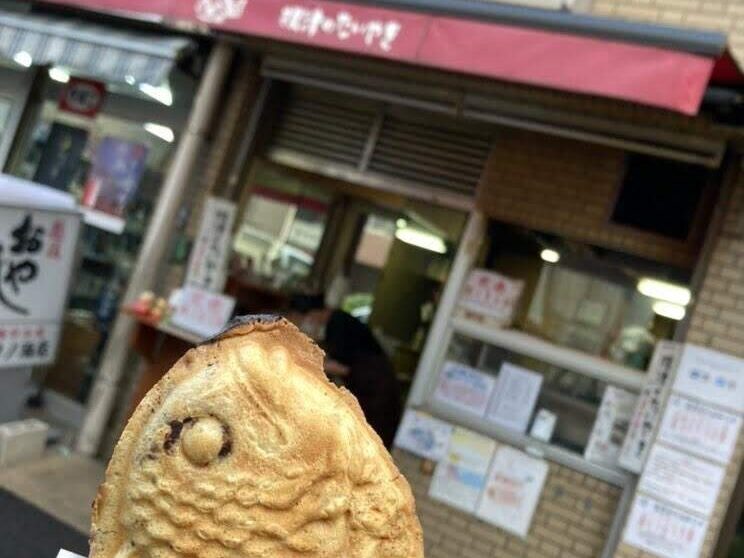
Nezu/Yanaka/Sendagi area
When you think Tokyo, you may imagine skyscrapers and glowing streets. This slow-paced area of Tokyo is different. Yanaka is a neighborhood that escaped the fires and heavy damage from wartime. Their adjacent districts, Nezu and Sendagi also do not house a lot of taller buildings. Many tasty independent shops dotted around this area makes walking here a delight. Sendagi was also once home of famous writers like Ogai Mori and is adjacent to the famous University of Tokyo.
Komazawa Daigaku
The residential Setagaya City, to the west of Shibuya, covered in the southern edge of the city by the Denentoshi Line has many notable neighborhoods, such as Sangenchaya and Futako-Tamagawa. My personal pick goes to Komazawa Daigaku, with its vast Komazawa Olympic Park, an abundance of both independent and chain shops, quiet streets, and easy access to/from Shibuya for a quick change of pace.
Are you looking for more places to try and visit in Tokyo? Then, check out Sayaka’s audio guide app! The one-for-all app has all of her favorite spots and hidden gems around Tokyo—it’s like having Sayaka as your private tour guide, so don’t travel to Tokyo without this!
🎧📱 Get My Tokyo Travel Guide 🇯🇵
Still want out of Tokyo? Try these lesser visited destinations in Japan.
Tsumago and Magome Towns
Gifu/Nagano Prefecture (3-4 hours from Tokyo or 2 hours from Osaka)
During the Edo period, these villages with Edo-style wooden houses flourished as a popular stop on the famous Nakasendo walking route between modern day Tokyo and Kyoto. A well-preserved trail with cobblestone streets, gentle elevation, and vast greenery connects the two villages. In addition, you can easily combine a trip to Tsumago and Magome with another day in Matsumoto or Nagoya.
Aomori
(3 hours from Tokyo)
Hirosaki Park houses one of the best cherry blossom views in northern Japan. If you missed the March and April blooms, Aomori, depending on the year, can be a cherry blossom destination for late April or early May. In addition, Lake Towada remains a known leisure destination for onsens and trail walking. If you are going to face crowds regardless, at least seeing a seasonal event like cherry blossoms may make the trip a little more worthy.
Just because it is high season for domestic travel does not mean you should completely avoid Japanese Golden Week. You will still find good options for accommodations and be able to enjoy times in less crowded locations.
Mini Quiz
Quiz 1: When does Shōwa Day take place?
a) May 3
b) April 29
c) May 5
Quiz 2: What do carp streamers (koinobori) symbolize?
a) Wealth
b) Strength and perseverance
c) Peace
Quiz 3: Which holiday used to be on a different day?
a) こどもの日 Kodomo no hi
b) 憲法記念日 Kenpōkinenbi
c) みどりの日 Midori no hi
Quiz 4: What food is commonly eaten on Children’s Day?
a) Sushi
b) Kashiwa mochi
c) Udon
Quiz 5: What does “midori” mean in Japanese?
a) Peace
b) Flower
c) Green
Check: How many did you get correct? Leave your answer in the comment.
Just like that, you have learned the background and history of the Japanese Golden Week holidays.
Conclusions
Today you learned about the Golden Week and my recommendations for travel during Japanese Golden Week. Whether you’re just wondering about Japanese holidays or planning a trip, knowing about the Japan Golden Week holiday helps you connect more deeply with the history and recognize what you might see around this time of the year.
There are many ways to make a successful Golden Week trip in Japan without breaking the bank or being stressed about crowds. This can be done by looking for off-center accommodation in bigger cities, planning trips on trains instead of driving or flying, and by booking early.
If you’ve experienced Golden Week in Japan, I’d love to hear about it in the comments! Got questions about traveling during this time or want tips for learning Japanese holidays? Let me know!
📩 Don’t forget to subscribe to the newsletter (coming soon May) for more useful information like this. And if you found this helpful, share it with your fellow Japanese learners or travel buddies!
Also, do you want to travel safe even with food allergies? Check out another one of my blog posts HERE about discussing allergies in Japanese and you can also get a free downloadable PDF for communicating allergy needs to restaurant staff.
Follow Sayaka on Social Media:
Sources:
[1] 2025年ゴールデンウィーク(4月25日~5月7日)の旅行動向https://www.jtbcorp.jp/jp/newsroom/2025/04/03_jtb-2025gw.html

